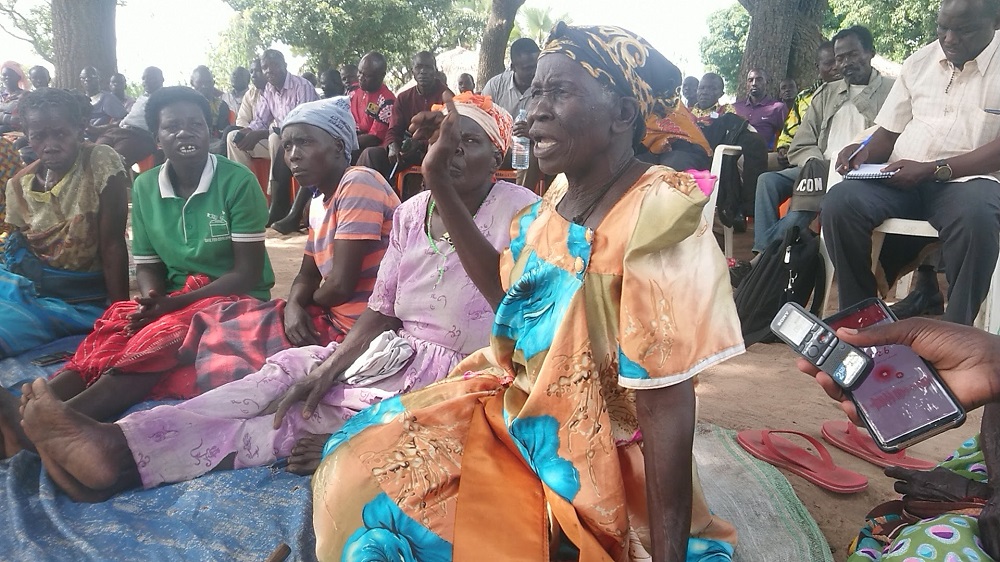Northern Uganda: A long time ago, nut collectors from Northern Uganda searched the dark forests for a wonder tree which could satisfy their hunger and treat their mortal ailments. A tree which could holds the linear majesty of human royalty intact.
They searched long and hard because they needed this cardinal source of anointing oil so deeply to illuminate their celebration of twins; a rare gifts of the supernatural to their posterity. A solemn tree to soothe their tired skins after garden work and nourish the elderly back to their youth.
It won’t work without obligations. And so, a solemn unbreakable bond was inched in blood. For every stem humanity will despicably fell, only a sacrifice of a blameless lamb will quench its fury. So magical to even tell when it will rain with precision. This is the tip of a long tale of the wonder Shea tree.
Fondly referred to as Yaa or Yao among the Acholi people of Northern Uganda, every bit of the wonder tree is economically useful. The government agency, Uganda Bureau of Statistics (UBOS) estimates its world market demand to be USD 2.5 Billion (approximately 9.3 Trillion Uganda Shillings as of 2023, with this demand projected to significantly grow to USD 5.2 Billion (approximately 19.4 Trillion Uganda Shillings) by 2030.
And yet to be quantified recent domestic demands for its Charcoal, considered the cheapest and most economical source of cooking fuel among Uganda’s low-income earners have effectively placed the Shea tree at the center of extinction fears among those who protected it for Millenniums.
Since her youth, 70-year-old Leonora Abalo Okello, a resident of Ogwaleng Valley Cell in Ona Parish, Pader district collected the Shea Nuts once a year. With 60 other group members, they process the nuts into butter which they trade in the Capital, Kampala.
“There is acute scarcity of nuts now driven largely by emergence of indiscriminate cutting down of trees by commercial Charcoal producers. Our main source of shea nuts is now threatened greatly,” Okello says.
Pader Shea Butter and Agro Processing Cooperative Society Limited is one of the many Shea Cooperatives springing up in Northern Uganda in a bid to save the magical tree. The others are in Lango and West Nile sub regions. Robert Abak, the Resident District Commissioner of Adjumani district is a member of one such Cooperative. He says they have planted some Five acres of Shea Parkland in Otuke district in Lango Sub Region.
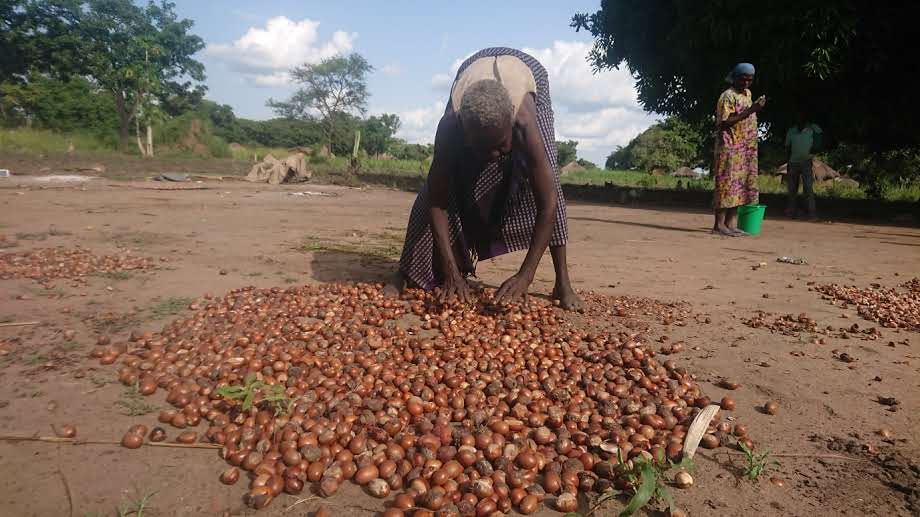
Scope of Deforestation
In Uganda, the shea belt, which stretches from the Ethiopian highlands, straddles Northern Uganda tending westward towards the Central Africa to West Africa where a major butter and cosmetic industry has been horned. The belt is a big contributor to climate ecosystem and biodiversity slowing down desertification from Northern Africa towards the southern end of the continent.
In Northern Uganda, the concerns with a great section of the belt now is the booming trade in charcoal directly targeting the Shea Tree, over the last 16 years significantly reducing its population according to a study by Uganda’s oldest and most prestigious University, Makerere.
The 2017 study by the University recommended urgent protective actions to regenerate the dwindling population of the Shea trees. This after finding out that by 2008, for every 2.4 acres piece of land, there were only 20 stems of mature Shea trees growing without the young ones (saplings). In agroforestry, Shea performs well with 6Meters by 6Meter spacing giving 180 trees in an acre of land.
It is such mature trees that are targets of the Charcoal traders today. What is more is that an industrial farming project is being set up within the shea parkland of Aswa river belt by the Government of Uganda. The Uganda Prisons’ Services is in charge of opening the 30,000 acres of land for growing of cereal grains such as Maize, Soybeans and Beans.
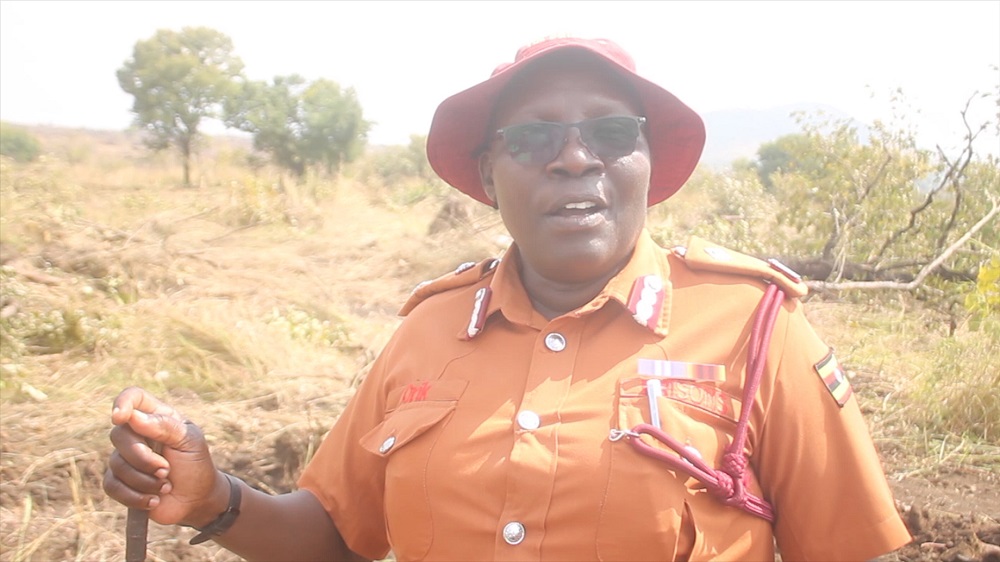
Margaret Orik Obonyo, the region’s Prisons Commander says, “They plan to work with some of the women led Shea butter producers in Northern Uganda to reforest the belt. More than three secondary cooperatives bringing together more than 5,000 primary producers have been commissioned in Acholi, Lango and West Nile Sub regions for similar purpose.”
The sub regions are home to Uganda’s Nilotica Shea variety, a highly prized commodity in the World market for its premium cholesterol free oil and butter believed to be medicinal remedy for many ailments.
The butter is now known for its commercial values in the manufacture of cosmetics for natural care of the skin and hairs. Government of Uganda Statistics estimate the current world market demand of the country’s Shea butter to rise sharply from the USD 2.5 Million (approximately UGX 9Trillion) in 2023 to USD 5.2 Billion (approximately UGX 19 Trillion) by 2030.
It is this economic news amidst a global recession that has plunged several women led cooperatives in Northern Uganda into anxiety over the future of the Shea trees surviving in the wild across the region.
Shea NUT FACT FILE
In Uganda, threats to Shea trees (Vitellaria paradoxa) — the source of Shea butter — has become a major regional environmental concern. From Shea trees, rural women derive cooking oil, skin moistener, hair conditioner, soap, medicine, and edible fruit are among the many uses of Shea (fondly called Yaa or Moo Yao) in the savanna belt of Aswa River in Northern Uganda.
Rural women cooperatives collect its nuts and process them to make Shea butter, a significant source of income where there are few other livelihood options. The Shea tree shares field space with staple food crops, providing ecosystem services for erosion control, groundwater recharge, fuel wood and leaf mulch. An important indigenous fruit tree in Uganda that takes about 30 years to grow to productive maturity. The fruits resemble plums and take about four to six months to fully ripen once a year. Whenever faced with adverse bush fires in its infantry, the Shea nut tree may become stunted taking up to 15 years to bear fruit.
Northern Uganda’s Shea belt stretches from west Nile to Karamoja via Acholi and Lango regions.The shea tree grows within the shea belt about 5,000 kilometres long through 21 countries in Africa (from Senegal to Ethiopia). In Uganda, the trees grow in Karamoja, West Nile, Nakasongola, Teso, Lango and Acholi regions.
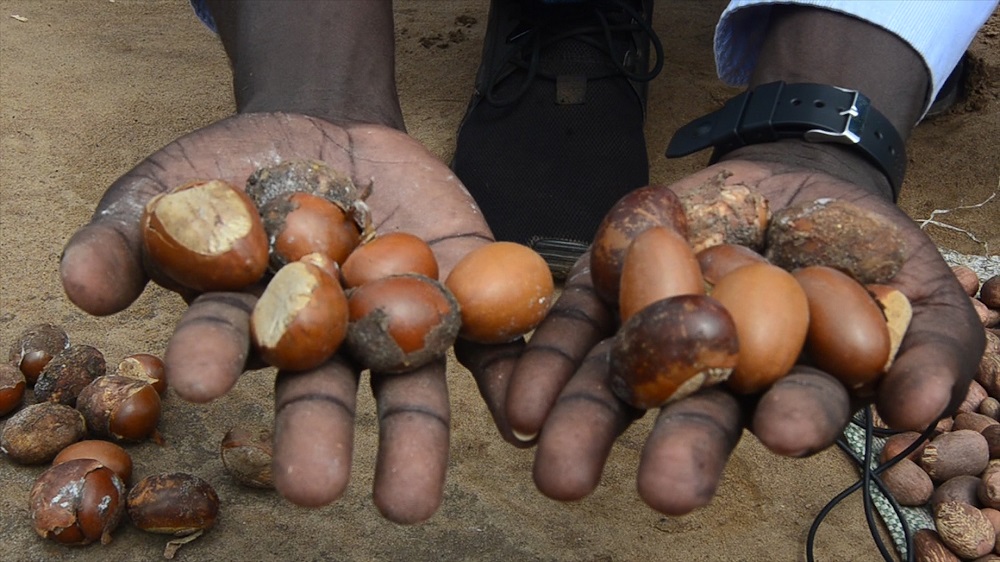
Ruth Amony, a Midwife in Lacekocot Health Center II in Pader district says the Charcoal is preferred by many women for its economically intense hot bloom, with bright glow of ambers in cook stoves. It produces smokeless flame considered economically viable source of cooking energy for middle income earners.
Common Conservation Goals
The Cooperatives share common but differentiated goals of conservation with scientists at the national zonal Agricultural Research and Development Institute (ZARDI) in Ngetta. At the Institute, scientists are training women led cooperatives in the region as conservation crusaders who should demand and enforce the conservation of the crop tree.
Dr. Laban Turyagenda, the Director of Ngetta ZARDI says, “to mitigate effects of climate change, we are training women led cooperatives in alternative sources of income and livelihoods to ease pressure on natural resources.”
The women are trained in Apiary, liquid soap making, Mushroom production as well as how to add values to Shea Nut products. “Through adding value, we strongly believe that the Shea Nut will be conserved rather than cut down for charcoal. From Shea Nut, we are making jellies and other cosmetics products”
Margaret Laloyo is the Vice Chairperson of Acholi Shea Cooperatives, an umbrella organization of Primary Shea Nut Collectors spread across all the districts in Northern Uganda.

Laloyo says, “The primary goal of forming the Cooperative is to mobilize Nut Collectors already profiteering from Shea Nut trees and the communities to claim ownership patents over their Shea Parkland. This way, we will conserve the endangered nut from extinction.”
For a long time, the Shea value chain has been operating without formal social infrastructure. Laloyo says through the infrastructures, each village will be supported to assemble its Shea Nut Inventory through which the trees’ survival will be tracked and documented. The infrastructures will thereafter become vehicles for domestication of the Shea Trees as seedlings will be distributed through them for regeneration of degraded landscapes.
Currently, only 40 percent of Nuts are known to be collected in the entire Acholi Sub region. Through training, the Acholi Shea Cooperative (ASC) hopes members will increase the collection to 80 percent over the next two years. The Apex Cooperative also wants to add value to the butter in view of attracting real value from the global market.
According to the objectives of the Cooperative, the global Carbon Market will be lobbied to admit the Shea Tree among the Global Carbon footprint in order to incentivize group members for its protection and conservation of the Nilotica Shea Species through carbon credits. The others is to secure unique Geographical Identifiers from Uganda Registration Service Bureau (URSB) and quality certificates from the Uganda National Bureau of Standards (UNBS). The Identifier will notify buyers of their origins while the quality certificates will attest to their uniqueness and quality.

Socio Economic Values
Shea nut cakes, a residue that remains after Shea butter extraction is a good supplement for animals and poultry feeds. It is also used in making briquettes for cooking fuel. Its wood is traditionally used for making house posts and support poles, stakes and fencing, joinery, seats, household utensils, durable platters and bowls, pestles and mortars and other farm tool handles.
Socially, the Shea trees hold divine position among the Acholi people of Northern Uganda. Its oil performs sacramental obligation in the confirmation of royalties. It is the final anointing given to chiefs as the indelible hallmark of permanent royalty.
His Royal Highness Kasimiro Ongom, the Paramount Chief of Patongo Chiefdom in Agago district confirmed this to NewVision a government-owned newspaper.
“In the Acholi Culture, you are only affirmed to be a royal chief with the anointing of the Shea Oil. It is this instrument which confers royal connection with the spiritual and the ancestors – without it, royalty is impossible.” He says.
Shea Trees Growth Pattern
In Africa, the Shea tree grows within the Savanah Shea belt about 5,000 kilometers long through 21 countries in Africa (from Senegal to Ethiopia). In Uganda, the trees grow in Karamoja, West Nile, Nakasongola, Teso, Lango and Acholi regions.Shea tree perform better in light (sandy), medium (loamy) and heavy (clay) soils, but prefers well-drained soil with acidic, neutral and basic (alkaline) soils although it can also grow in nutritionally poor soil. An area of well drained soils preferably sandy or clay makes a great deal.
According to Uganda Bureau of Statistics (UBOS), Shea Butter is categorized in five grades: A (raw or unrefined, extracted using water), B (refined), C (highly refined and extracted with solvents such as hexane), D (lowest uncontaminated grade) and E (with contaminants).
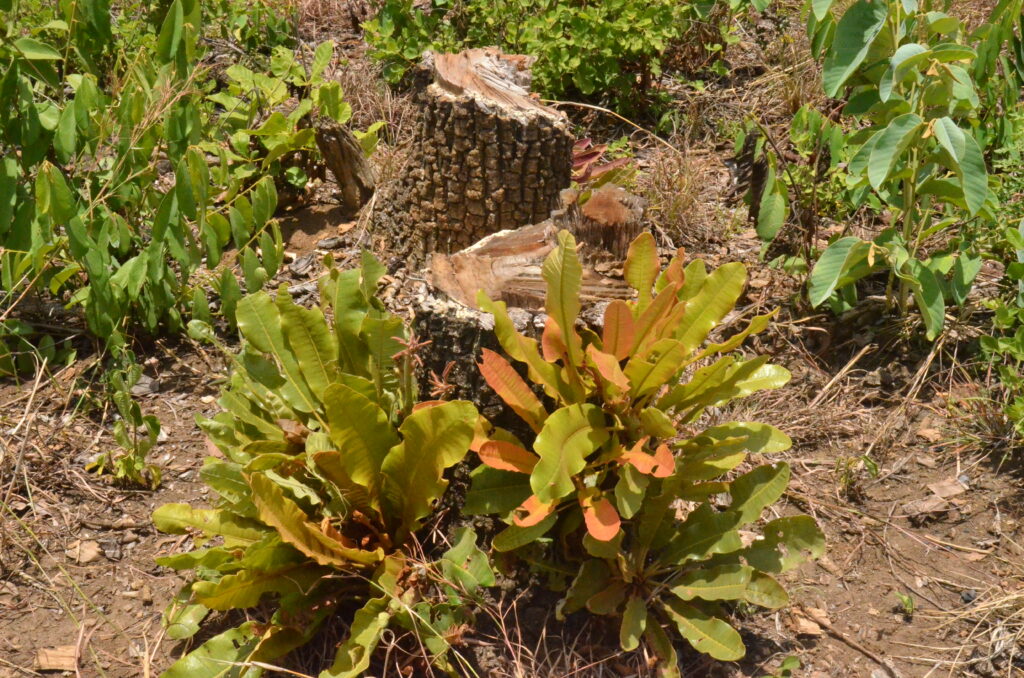
In celebration of twins, the Shea Nut oil is the most fundamental ingredient in the elaborate ritual of customary baptism. Until it is available, the ceremony is never attempted or null and void if performed. The twins will suffer frequent medically unexplainable life-threatening ill-health, malnutrition brought about by loss of appetite and sudden accidents including falling in fires or water as well as bringing sickness onto their parents. This is why the twin ritual is of inevitable significance under the Acholi culture.
During the ceremony, the twins receive soul cleansing bath early in the morning in steaming hot water laced with Shea Oil. The Shea cake is plastered onto their painful umbilical cord to fasten healing during the first outdoor bath, just in front of the entrance of main family hut – considered to host the sanctity of the homestead.
The twins are then smeared with the Shea Oil, to firstly moisturize their skin, introduce protective cover against rashes, beautify its texture and most importantly calm their spirits against frightening life challenges. They are then baptized Apio or Opio (to denote the first female or first Male respectively) or Acen or Ocen for their followers, after which they are blessed by elders to be productive and live to old age life expectancy. The bath water is never violently splashed onto the ground. Now, the twins are commissioned and ready to face life heads-on with strength reminiscent of the Shea Tree.
Happy traditional dancers made up of elderly women and men perform joyful maternity songs while dancing rhythmically in circular patterns in absolute celebration and awe of the gods for the gifts of the twins. After the thanksgiving sacrifice to the spirit realm, it is time to feast and drink. The only Acholi cuisines prepared for this special day is Dek Ngor and Kwon Kal (Millet Bread served in gourd) – all eaten steaming hot with the first gift of the twins – the Shea Oil earlier used in their baptism. Legends believe, the oil cools off the heat in the sauce.
Dek Ngor is definitive flagship leguminous cultural cuisine best savored hot in Shea Nut Oil. It holds a special cultural position as it is the main dish prepared for hosting royal chiefs in the region as well.
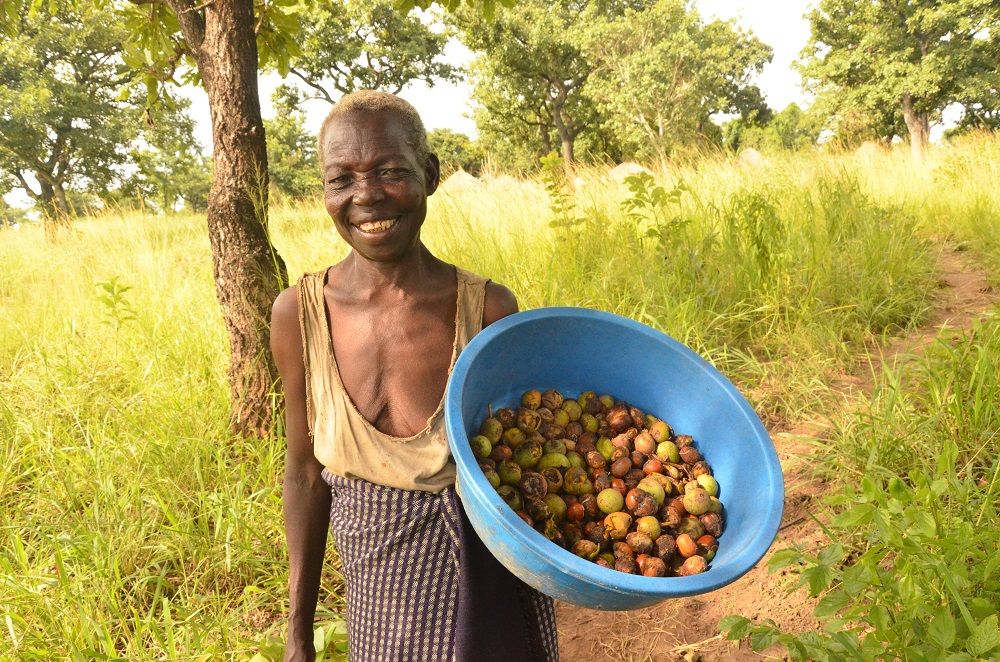
Ruth Amony, the Midwife Interviewed in Lacek Ocot Health center II confirmed that “the twin celebration in itself is spiritual and still honored to date. If it is not properly conducted, the health of the twins and their survival will be questionable.”
Tom Lapolo, an elder in Pader district says, “It is difficult to imagine a true Acholi without Shea trees. Everything customary is constructed around the Shea Nut trees.”
In Lakabam Parish in Pader District, many cooperative members have come together to protect their shea trees through collaborative community approaches. Every year, they create fire lines to protect the Shea.
“As a mother, shea is very important to us. During nut collection season we feel good because if you collect one or two sacks, it is enough to pay school fees for our children and that is why we are protecting it,” says Tekel Akello, resident of Lakabam village in Laguti Sub County. Akello is one of the locals in Lakabam who have unanimously united themselves to keep watch and alert any person cutting shea tree.
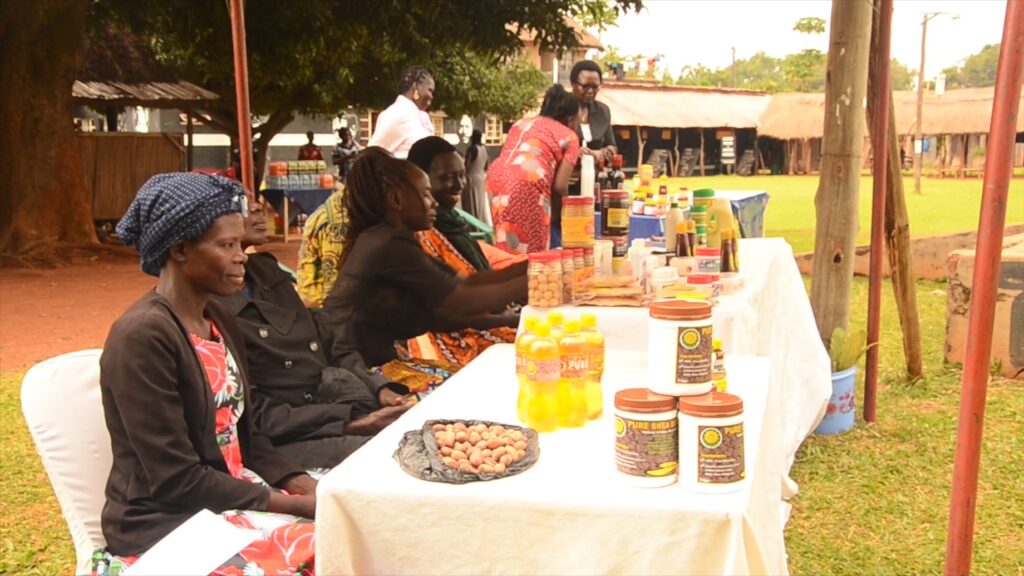
In Lacekocot sub county, one of the most affected areas within the shea belt, women dealing in shea butter in Lacekocot Sub county have teamed up to become watchdogs against the charcoal burning threatening shea trees.
“We decided to come together as a group to guard against rich people who come with power saws to massively cut shea trees in our community for burning charcoal. As a community we prevent them from doing so and we want government to prioritize the protection of shea trees because we have tested and known their benefits.” says Arach Lillian, a shea butter trader in Lacekocot trading center.
This collaborative management shields the nut trees from wild bushfire through intercropping the trees with other edible legumes. The cooperative boasts of the largest Shea Parkland in the area.
Culturally, both Patongo chiefdom in Agago district and Payira chiefdom in Pader have developed bylaws to prevent their subjects from cutting Shea trees. The policy provides a penalty of approximately UgX 2 Million (about $550) for buying a bull, a goat, transport facilitation and allowances for chiefs and cultural elders to perform a ritual to appease angry ancestral spirits. They believe that cutting down a single stem of Shea tree or merely its branches during rainfall season is enough to anger the gods of rains. Consequently, the gods send down hailstorms to ravage their food crops through floods and famine.
Lakabam is the only community in the area that has resisted the urge to convert their Shea trees into Charcoal. Their Shea forest consisting of more than 1,000 Shea trees remains intact making them the most dominant community supplying Kampala and Gulu Cities with Shea Oil and Butter.
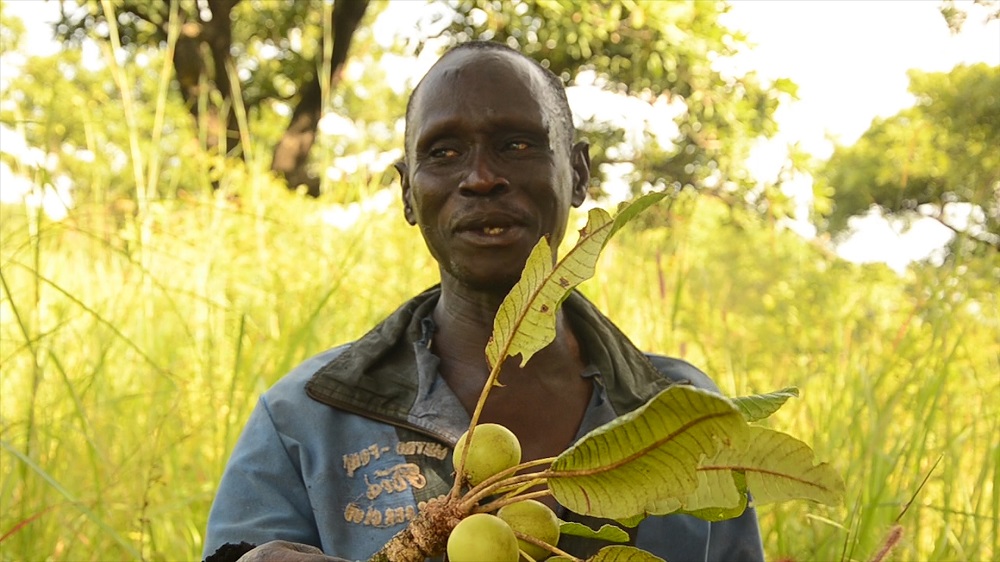
Shea trees as Climate Predictor
The Shea bear fruits once a year, in November. The Nuts are gathered for as long as three months or more. With good storage, the nut can last for up to two years when properly dried.
There is an indigenous knowledge running large among the Acholi People. They strongly believe that the Shea tree can tell the Climate through its flowering and fruiting pattern.
“Plenty of fruits is an indication of crop failures, and hence food insecurity. By observing the fruiting pattern, communities can accurately tell the nature of the next rainfall pattern.”
This year’s rainfall pattern matched the prediction foretold by the Shea trees in the fall of last year. The Nut presented with few flowers and fruits, an indication that all would not be well. Rainfall precipitation intensified as late as May of 2023 across most areas within the Shea belt catchment areas. Crops have massively failed.
According to John Banya Lakori, an elder in Lakabam Parish in Ajan Sub County in Pader District Mango is the domestic Cousin of Shea trees. When mangoes are small in size and few in numbers, the natural interpretation is that of food insecurity for the acholi communities. The natural response is to limit extravagant utilization of available food. Peasant farmers descend to the Wetlands for horticultural production as they prepare for the worst of season.
Margaret Laloyo, the Vice Chairperson of Acholi Shea Cooperative affirmed the indigenous knowledge to this publication, “God strategically placed the Shea trees in Savanah Grassland. The moment the leaves begin to yellow, farmers know the rain is about to disappear. This is an important seasonal indicator for food security especially in an atmosphere of Climate Change as it determines whether the rain is coming late or early,” She explained.
Such indigenous knowledge galvanizes the resolve of the communities to hold onto Shea for its tolerance to droughts. With the few nuts collected the people can adapt to Climate Change in the most of times.
Scientific Perspective
According to botanical scientists, the Nilotica Shea Trees is one of the 35 endangered tree species in Uganda. The others are Afzelia Africana, scented guarea (threatened by habitat loss), Ocotea Kenyensis (threatened by habitat loss) and the red ironwood tree amongst others.
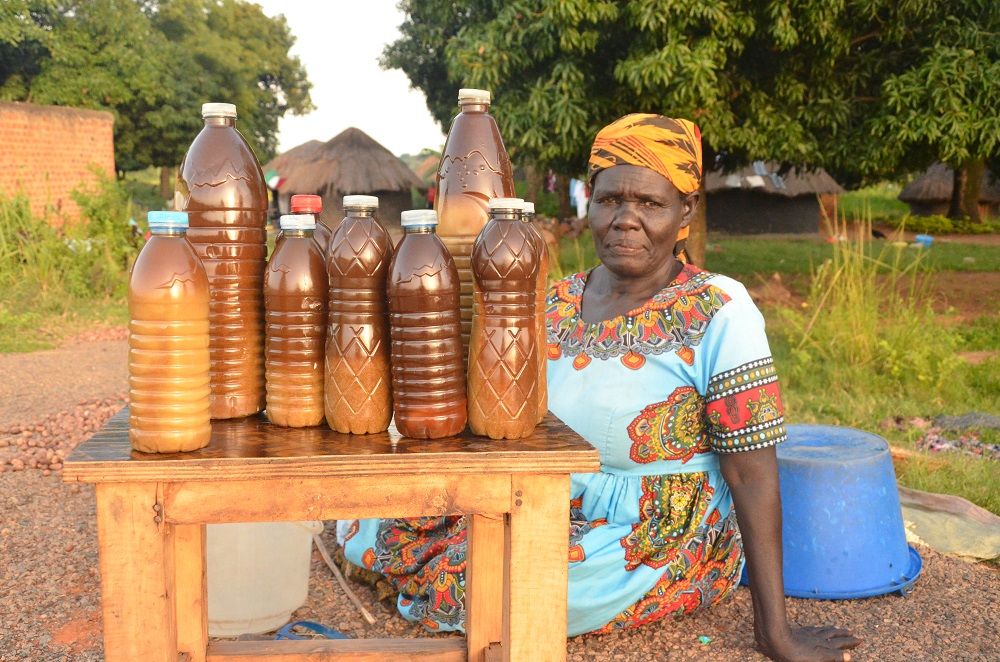
The Shea fruit consists of a thin, tart, nutritious pulp that surrounds a relatively large, oil-rich seed from which Shea butter is extracted. It’s a deciduous tree usually seven to 15 meters tall but can reach 25 meters high and has a trunk diameter of two meters wide. Scientists at the National Zonal Agriculture Research and Development are attempting to graft the tree to fasten its maturity and improve its production.
Shea Grades
Commercial grades are A, B, and C. The colour of raw (grade A) butter ranges from cream (such as whipped butter) to greyish yellow. It has a nutty aroma which is removed in the other grades.
Grade C is pure white. While the level of vitamin content can be affected by refining, up to 95 per cent of vitamin content can be removed from refined grades (i.e., grade C) of Shea butter while reducing contamination levels to undetectable levels.
Soon after the Lord Resistance Army insurgency ended in northern Uganda in 2006, the region started facing immense rate of deforestation for commercial charcoal burning, logging and timber production as people took forest harvesting as source of livelihood and business. This environmental injustice threatens Shea tree population as they became the cheapest available livelihood source. Global Forest Watch states that Uganda lost 64.1 thousand hectares between 2010 and 2022 shrinking the covers by 6.93 million hectares out of the national 29 percent land tree cover.
Scientists at Ngetta Zonal Agriculture Research and Development Institute (ZARDI) however state that temperature is a major factor in plant flowering and fruiting patterns.
“Abnormally high temperatures cause the plant to suffer flowers or fruits abortions. Consequently, the plant will bear few fruits. This is a classic case of Climate Change at play as it is generally accepted that the temperatures of Northern Uganda have appreciated over the last few decades,” Dr. Laban Turyagenda told this publication without giving official figures.
Government Intervention
In addition to the Research being done, government of Uganda has intervened in the Shea Nut value chain in many ways including gazetting it as cash crop rather than an ordinary plant.
“This was done in 2008 by President Yoweri Museveni. He instructed the Ministry of Agriculture, Animal Industry and Fisheries (MAAIF) to gazette the Shea Nut trees in Northern Uganda as a crop to pave way for its conservation and protection,” Robert Abak, the Resident District Commissioner of Adjumani said during an interview.
Abak, himself a member of the Shea Nut Cooperative says the presidential directive is the backbone for their movement. Through this directive, the Cooperative has managed to set up Five Acres of domesticated Shea Nut trees in Otuke district in Lango sub region.
This is the first major attempt to grow the nuts at plantation level. Its seedlings were raised and distributed to farmers. The cooperative want to scale this initiative to other regions to spur its conservation and protection.
The Uganda Registration services Bureau has also stepped out to collaborate with other stakeholders in protecting the Shea trees.
Vincent Katutsi, the Director Civil registration at URSB says Shea is such a unique product with a lot of international interests. “The tree must be protected as it has proven to be very lucrative. It is our Gold in the region which hasn’t been harnessed until recently. We are very much interested in helping farmers form cooperatives for them to derive value from the International Market.” He stated.
URSB has embarked on registering the Cooperatives in view of creating awareness for its conservation in view of standardization. They hope to give a unique Global Identifier for the Nilotica Shea for the Cooperatives to derive premium for their products.
In Aswa River belt, government intends to ramp up the community conservation efforts through a new plantation estate being set up in the area. The estate is to grow Maize, Soybeans and Beans for the nutrition of the population in light of Climate Change hazards happening in the country.
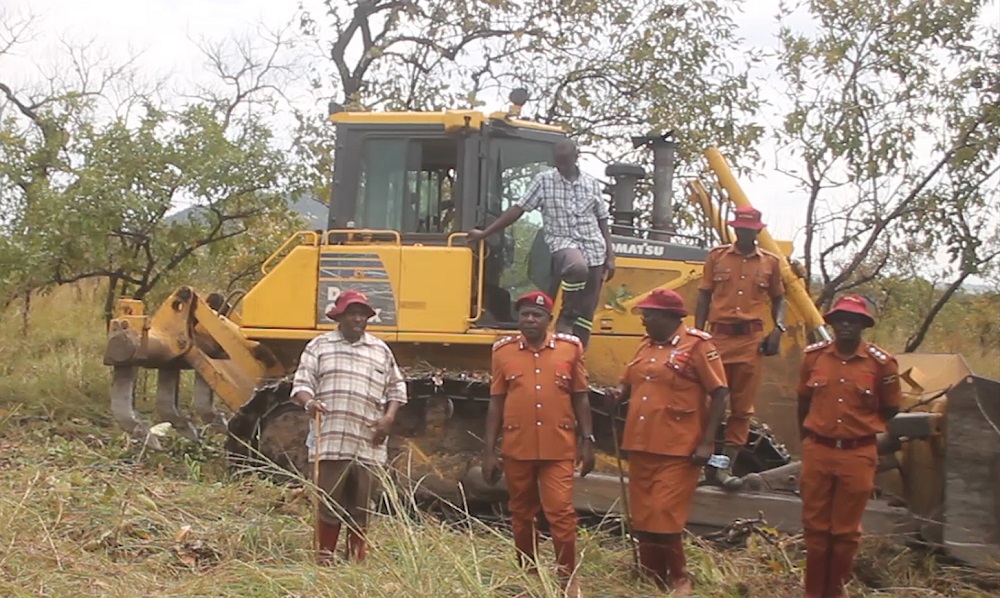
Communities had feared that the Project being championed by Uganda Prisons’ Service will decimate Shea Trees on the entire 30,000 acres of land. However, Margaret Orik, the Regional Prisons’ Commander North says the project will be used in promotion of conservation instead.
“We already have an officer who is raising the seedlings for us to replant the estate. We are very careful with the Shea trees given its values in this community. So, we are only uprooting them in areas of congestion,” she explained from the project site in Aswa River belt.
The threat on shea trees by the industrial agriculture has not skipped the attention of the Policy makers, as they have moved to demand that an Environmental Impact Assessment be carried out on the shea parkland which was a ranch several decades ago, “What we have been tasking government on the change of this user clause, is the issue of Environmental Impact Assessment, but unfortunately this not being done. So we need to tell our people to come out to protect shea tree,” says Hon Tony Awany, who doubles as the Member of Parliament for Nwoya County and General Secretary Acholi Parliamentary Group.
President Museveni’s Executive Order
During the course of this investigation, President Museveni issued an executive order specifically mentioning the Shea trees as endangered. He called for urgent protection of the Shea trees.
Grace Freedom Kwiyocwiny, the Minister for Northern Uganda says the government research will be complemented with a Census to establish their numbers in view of conservation. It is however unclear when the Census will be undertaken.
This investigative story was produced with a generous grant from the Internews Earth Journalism Network under the Biodiversity Story Grants for East African Journalists.
If you would like your article/opinion to be published on Uganda’s most authoritative news platform, send your submission on: [email protected]. You can also follow DailyExpress on WhatsApp and on Twitter (X) for realtime updates.



